NATURE INSPIRED INVENTIONS --- LEXID; A better X-ray machine built from the idea gotten from the deepest part of the ocean.
When we discussed about the submarine, we learnt that the invention of the submarine gave man the ability to explore the underwater world. In one of man's travels under water, man met an of animal whose distinguishing feature made it stand out from every other creature under sea. This animal is the lobster. What really made the lobster special wasnt the fact that it had five pair of legs, or that it practiced cannibalism. What made them special is their eyes.
Before this discovery, man was having problem with his X-ray machines, which were so bulky and not so efficient. When Adam Croasdell finally observed the eyes of the lobsters and saw how it focused every ray of light that enters into it, he applied it in making the LEXID, which was a more efficient and less bulky x-ray machine, the lobsters exist mostly in.
I will be starting this article by explaining what an X-ray is, and how it is produced so as to help us realize the importance of this invention. We will also get to know the history and uses of X-rays before we finally get to know how the lobsters inspired the invention of the LEXID.
Alright, let's begin.
WHAT IS AN X-RAYS
Let's start from the known to the unknown. You know about the visible light (I mean, the light that you can see). X-rays are almost the same thing as visible light rays. Just check out their properties; both of them are wavelike forms of electromagnetic energy and this energy they posses is been carried by photons which are kind of little particles. So, based on these properties, they are the same. What really makes an X-ray an X-ray and differentiate it from visible light ray is just the energy level of the individual photons. We refer to these different energy levels as the ray's wavelength.
Our eyes are designed to see electromagnetic waves whose wavelength corresponds to that of the visible light, that is why we can be able to see visible light. Every other wave of shorter or longer wavelength, (just like that of the X-ray which has a shorter wavelength even though it has a higher energy than the visible light), our eyes can't see them.
Earlier, I mentioned photons. The photons of the X-ray (justike that of the visible light) is produced as a result of the movement of the electrons in atoms. For you to. understand this, I want you to take your mind back to electronic configuration, how electrons are placed in orbits. Whenever an electron falls from a higher orbit to a lower one, it release some energy so as to be at the same energy level with that orbital. This extra energy is released as a photon, and the energy level of this photon is totally dependent on how far the difference in energy level between the orbital where electron was previously and the orbital where it fell to.
If this photons released where to collide with another atom on its own, there is a likelihood that an electron of that atom would be boosted to a higher level. But, for this boosting to happen, the energy level of this photon has to be the same as the difference in energy between the previous orbital and the new orbital. If this condition is not fulfilled, there is no way the electron would move from one orbital to a higher one.
Remember that we have already established that the X-rays can't be seen with our visible eyes, by now, you should be wondering how man get to know about this ray. Because of that, I feel it's right if we just take a break a learn how man discovered this wonderful ray.
HISTORY OF X-RAYS
It was a professor in Wuerzburg University of Germany known as Wilhelm Conrad Roentgen that discovered the X-rays. He discovered these rays in the year 1895. One certain day, Roentgen was working in his laboratory with a cathode ray tube. While working on it, to his amazement, he observed a fluorescent glow of crystal on a table that was very close to his tube. Mind you that this tube which he was working was a glass bulb that has both a positive and a negative electrode inside it.
What Roentgen did next was to evacuate all the air that was inside the tube, thus creating a vacuum inside it. Again to his amazement, when he applied a very high voltage to the tube, a fluorescent glow was produced. In his curiosity to know. what will happen if he covered the tube, Roentgen went and found a heavy black paper. With this heavy black paper, he covered the tube and again, applied a higher voltage through the tube. This time, he observed a fluorescent light that was green in color on a material that was located a few feet away from the tube.
This was unbelievable, this ray wasn't only able to pass through very heavy paper covering, it was also able to to cause materials in the room to fluorescent. Immediately, Roentgen concluded that this ray that was emitted from the tube was a new type of ray that was previously unknown to man, he named it X-ray. With further he was even astonished more by the fact the ray was even able to pass through most solid substances, and was even able to cast shadows of them.
When Roentgen tried to experiment if these rays could pass through very heavy metal objects and human beings, he observed that the ray couldn't pass the metal, and it also couldn't pass through human bones. The only thing it managed to do was to pass through human tissues. He even experimented passing the rays through his wife's hand. To show to his colleagues this amazing discovery, Roentgen produced a radiograph of a box that had sets of weights in it.
When the world heard of Roentgen discovery, no scientist could hide his/her excitement. In fact, so many scientist left what they were already researching on and tried to replicate Roentgen's experiment using the cathode ray tube, and in the process discovered a lot of properties about this ray. Mind you, the ray tube was common during those days. Every Newspaper and magazine wrote about it. The public were excited about this invisible wave, while the science world were amazed by this ray that has a shorter wavelength than visible light. There was never a discovery celebrated as the Roentgen's X-rays.
Due to the enthusiasm that greeted this discovery, within few months, man have already seen potential areas where these rays can be applied, surgeons were already using the X-ray is studying the body of their patients, thus enabling them to work effectively. By the time it was 6 months after Roentgen discovered this ray, physicians were already using it to locate bullets in the body of wounded soldiers.
From that time till 1912, X-ray were used majorly in the field of medicine. The reason why it wasn't being used for industrial purposes was because that the X-ray tubes, which produced X-rays tend to break whenever the voltage passes a certain limit. Finally, in 1913, Coolidge designed the high vacuum X-ray tubes which allowed voltages up to 100,000 volts. That invention began the use of X-rays for industrial purposes.
Subsequent tubes were made. The 200,000 volt X-ray tube, which made radiographing thick steel parts possible with a short time was made in 1922, while the 1,000,000 volt X-ray generators were made by the General Electric Company in 1931. In that same 1931, the American Society of Mechanical Engineering allowed the use of X-rays to check out fusion welded pressure vessels. This approval opened the way for the use of X-rays industrially.
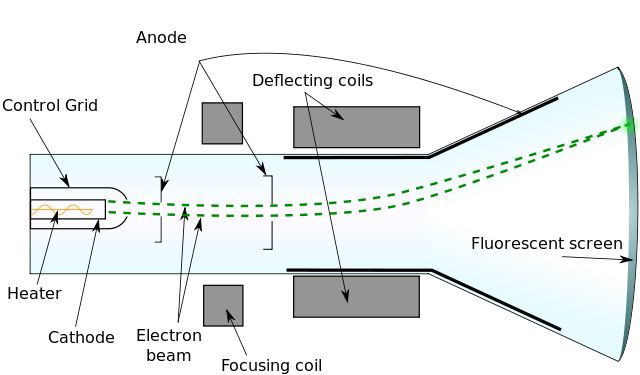
Picture by Theresa Knott - Wikicommons CC BY-SA 3.0
Cathode ray tube
Right now, we know that after the discovery of the X-ray, man began to build better and better X-ray machines, thus, expanding the use of the X-ray to even industrial purposes. Let's get to know how an X-ray machine works.
HOW DO AN X-RAY MACHINE WORK
I will be dividing this section into how the X-ray is produced and how it is used, and at the end I will try to link the two subsections together. To avoid making the article very length, I will illustrate how the X-ray machine works using a doctor and a patient example. Don't worry about that, its the same as industrial use too.
How the X-ray is produced
There are two major things found inside an X-ray machine, they are the cathode and the anode electrodes. These two electrodes sit inside a glass a vacuum tube. The cathode of an X-ray machine is like a filament of an old fluorescent lamp. Whenever the X-ray machine passes through this filament, it heats it up. Due to this heating, the electrons that are on the surface of the filament gets ejected. This electrons that were ejected are drawn across the tube by the positively charged anode (which is a flat tungsten disc) at its other end.
Due to the fact that the difference between the voltages of the cathode and the anode is very high, these ejected electrons literally fly across the tube to the anode with a great force, and when they get to the anode, they collide with the atoms of the tungsten (the anode is made of tungsten), knocking off the electrons in one of the lower orbitals of the atom. Due to this, an electron of the tungsten atom that is on a higher orbital than the one that the one that was released immediately falls to replace it and in the process emitting it's extra energy in the form of photon. This photon that was released is an X-ray photon.
There is also another way how an X-ray photon can be formed without a free electron hitting an atom. For this to happen, an atoms nucleus has to attract a speeding electron with a force enough to force it to change its course of travel. As the electron "brakes" so as to change direction, it emits it's excess energy in the form of an X-ray photon.
How the X-ray is used to photograph a patient
If one were to see the first sets of X-ray pictures, one will notice the fact that the soft tissues of the body doesn't show up clearly. If one desires to use the X-ray in picturing a particular organ, or to examine the way the circulatory system works, the doctor has to introduce a contrast media into the patient's body either by injecting or getting the patient to swallow it. The contrast media are just liquids and they do have the ability of absorbing the X-rays more than the surrounding tissues. These contrast media are majorly barium compound.
A fluoroscope is used in conjunction with the contrast media, thus, as the X-ray passes through the body, a moving X-ray image can been seen through a fluorescent screen.
By now, you will be wondering why the tungsten doesn't melt despite the fact that electrons of very high energy level are directed towards it. The reason is because a motor rotates it, therefore preventing the electron beam from being directed to a particular area. This keeps it from melting. Also, to prevent the machine from over heating, a cool oil bar surrounds the envelope whose job is to absorb heat.
As its possible for X-rays to pass through glass, the whole mechanisms is been covered using a very thick lead shield (mind you, X-rays find it hard to pass through lead), leaving only a very small window for a narrow beam of X-ray photons to escape through. This beam is now pass through so many filters before it gets to the body of the patient.
There is a camera that is attached to the other side of the patient. What this camera does is to record the pattern of the X-ray light as it makes it way through the body of the patient. The images captured by this camera are kept as negative. The places that appear dark in the film are areas that are exposed to so much light. Areas that are exposed to less light appear lighter. Still using the doctor patient example, the result of a radiography shows that hard materials like bones that allows less light to pass through it to the camera are lighter, while the areas that aren't blocked by bones appear darker.
USES OF AN X-RAY MACHINE
Since the discovery of the X-ray, X-ray have been of great importance to man. Below are the few applications of X-ray machine.
Broken Bones
In hospitals and various medical centres, the most common application of the X-ray machine is for taking picture of the patient body to check out for broken bones and to locate bullets or any other object that might have found its way into someone's body system. With the result gotten from the X-ray examination, the doctor can decide the best way on how to effectively carry out treatment plans.
Radiation Therapy
Regarded as the world's most dangerous sickness, cancer is causing death in the millions. Since no cure have been found for it yet, it is seriously one of man's biggest problem. It's good that Roentgen discovered X-rays. Right now, X-ray is playing a major role in the fight against cancer, as cancerous cells and tumors can be killed by directing high energy radiation at them. It's through that this radiation treatment is dangerous, but for now, it is the best way to combat cancer.
Security Purposes
Most establishments, like the airport, banks do have X-ray security systems that scans baggages to make sure that he or she is not carrying any dangerous item. Recently, X-ray body scanners have been developed, thus making it had for someone to enter establishments like bank or an airport with dangerous items.
Revealing Counterfeit art
This is the most recently discovered use for the X-ray. Before now, thefts of arts have been carried out by painting a picture over an existing one, and there was no way to know a counterfeit except by destroying it. But right now, art historians can easily detect if a picture has been painted over an existing piece without destroying it by passing it through an X-ray.
PROBLEMS ASSOCIATED WITH THE CONVENTIONAL XRAY MACHINES
Even though conventional X-ray machines are good, they have three major problem. The first is that they are very bulky. This means that one can carry them about, and once they are stationed at a point, they remain at that point till they are carried away for maintenance. Also, they are not very effective, as most of the light rays escape without being processed. The third reason is that people that pass through X-ray machines very often soon get to suffer from the effects of radiation. These and other reasons posed as serious problem for man till man observed the eye of the lobsters and saw why their eyes are very efficient.
INSPIRATION FROM NATURE:- LOBSTERS
Lobsters is the name given to a large family of marine crustaceans. They are known for having a rigid body that is segmented and also for having five pairs of legs. Three of these five pairs of legs do have claws. They do also have a pair of pincer, also referred to as chela. Most times, a chela on one side is always bigger than the one in the other side. They also have two very long antennae and several pairs of swimming legs located at their elongated abdomen. Their muscular tail which looks so much like a flipper is used for swimming.
You can find lobsters in any ocean in the world, and they live singly in crevices or burrows under the rocks. They are omnivorous, feeding majorly on fishes, worms, other crustaceans, mollusks and even plant life. Most times, when they are kept in captivity, they eat one another (like they practice cannibalism). Lobsters can have a wide range of colors. They can be brownish green or blackish green in color above , and yellow, orange, red or blue underneath, depending on the lobster. They only turn red in color when they are cooked.
Their females get matured enough to lay eggs when they reach five years old, and when their males transfer their sperm to their females in the summer, the eggs do not get fertilized till it is spring. A Female lobster can lay about 3,000 eggs at ago, and those eggs remain attach to them till they hatch. Let's take a break here, because there are so many. amazing stuffs about lobsters, but none of their feature is as interesting as their eyes.
THE EYES OF A LOBSTER
We have so many amazing features of the lobster, but the truth is that all of its amazing features pales when they're compared to the way the eyes of a lobster is designed. The eyes of the lobster do have tiny facets that are shaped perfectly like a square. And this single feature gives the eye of the lobster to focus light using reflection unlike the eyes of every other creature whose eye lenses focuses light by refraction. Thus every light ray that reflects from an object and enters the eye of the lobster, even light rays that enter at very small angles are reflected to a particular focal point.
The reason why the eye of the lobsters do look like it has tiny squares is because of the many tiny square tubes that is placed on the spherical surface of its eye. Do you know that if one was to look at these tubes from one side, they appear as flat shiny mirrors. Lobsters are blessed to have this kind of eye, as it is only reflectors that are at right angles can form an image regardless of the direction of the light rays.
This concentrating light ability of the eyes of the lobsters makes it very very easy for them to see over a wide area that is actually dark. When they get to areas is exposed to bright light, the lobster eye causes an opaque pigment to block every other day that enters the retina except those that are parallel to those square tubes.
APPLICATION OF THE IDEA GOTTEN FROM NATURE
When the Optics Corporation which are funded the US Department of Homeland Security observed how the lobsters eye are designed and how it enables them to reflect light instead of refracting it, the applied it in the design of an X-ray scanner. The result of the application of this idea they got from nature is shattered we know today as the LEXID. LEXID stands for Lobster X-ray Imaging Device. This device replicates the eyes of lobsters exactly.
The major constituent of the LEXID is a low powered X-ray generator, and an optics system designed like that of the lobsters. Just as the squares in the eyes of the lobsters, these optic systems do have thousands of metallic and high polished squares that aid to direct, reflect and align the X-ray's as they pass through an object it is directed towards. These causes the X-rays to be emitted in parallel waves causing them to be concentrated. This concentration gives the X-ray the ability to penetrate an object more efficiently than the normal X-ray machine.
Also, what makes the Lexid unique is that, unlike the normal X-ray machines that capture the rays that comes out of the other side of the object, the LEXID detect the rays that gets scattered back into the device. Due to its lobster design, the optics system of the LEXID is able to focus all the back scattered rays into one focal point by reflecting them. It is this ability of focusing the reflected light in a small. area that makes the LEXID scanning system very efficient and precised.
Even though the LEXID is small and can be held by hands, it can see through concretes, woods and even 3 inches of steel without any stress. Right now, it is been used to see what is inside a cargo container without opening it. Another advantage of the LEXID is that it's radiation exposure is very small when compared to the conventional X-ray machines, and for that reason, it can be used on human beings without risking someone to the dangers of radiation. Though the image definition of the LEXID ain't that high, it is believed that within a short period, scientist will come up with a more efficient LEXID that would be able to produce high definition images.
![]()
Maxpixel.com:Lobsters can see through Cargo Containers
CONCLUSION
Both discovery of the X-ray and the constructing of better X-ray machines are one of man's greatest achievements. Before the discovery of the X-ray, it was very hard for doctors to know the exact point where their patients bone was broken. If a soldier was to be shot, sometimes, by the time they poke around searching for the bullet, they must have caused so much harm than good. Yet still, the X-ray machines had problems which includes bulkiness, not being very efficient, and the fact that it sometimes had effect on those that get so exposed to it. In search for the solution to this problem, man had to turn to his one and true teacher, "Nature".
This time, Nature took man to the deepest part of the ocean. In that place, man met the lobsters, the animal with the best sight in the world. When man learnt that the eyes of the lobsters are so perfect that it focuses every single ray of light that passes through it by reflecting it, instead of refracting it, man couldn't help but get stunned by the wonders in nature. This case of the lobsters is a proof that nature has a secret hidden in everything in the world, and it is left for man to pay attention and discover these secrets. There are so many animal under the ocean man do not know yet, just be patient, you are yet to see the best invention inspired by nature.
REFERENCES
Lexid Lobster eye X-ray Camera
Lobster eye, brilliant geometric design
This article is spornsored by mechanicassistant.com

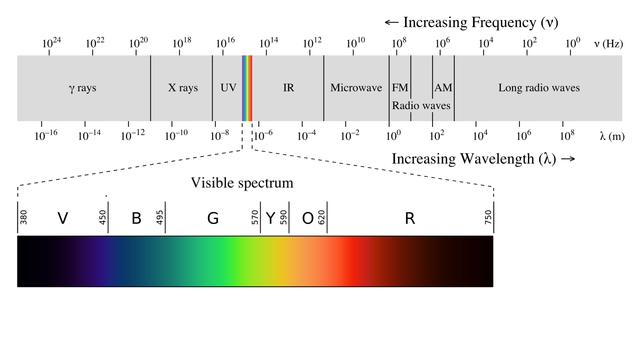
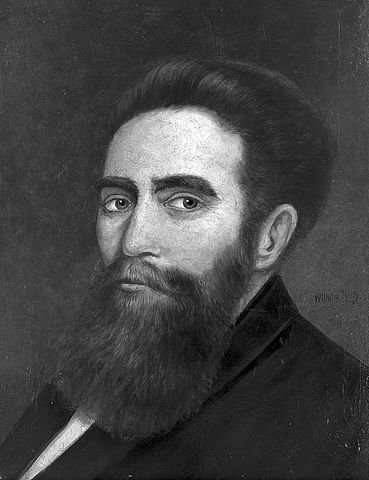
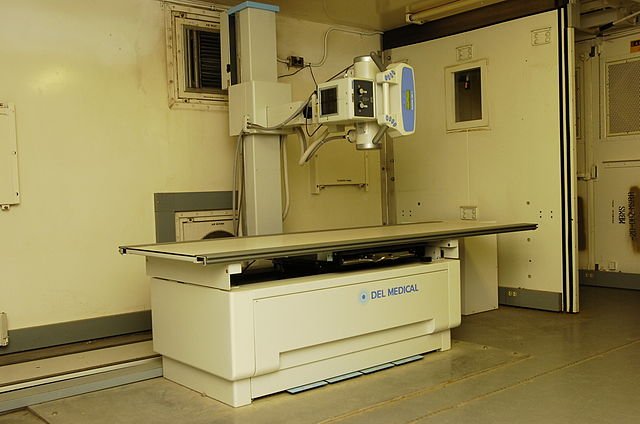
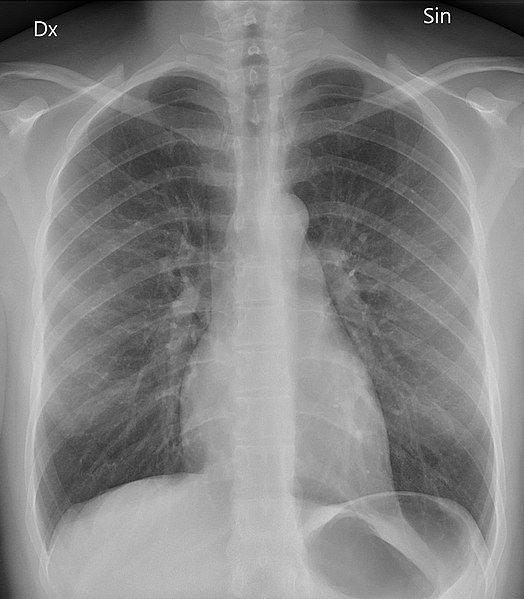

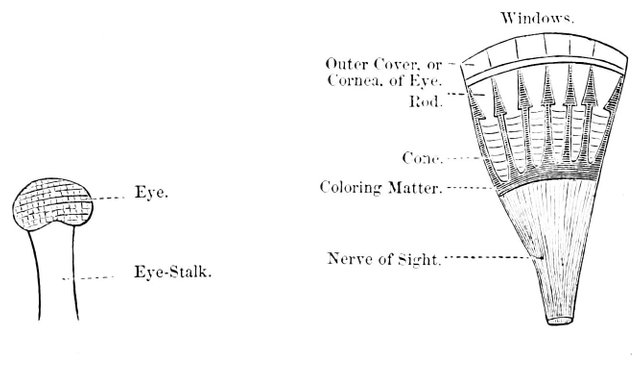

I salute your doggedness to do a good job. From the what's x-ray is, its history involving circumstance in which it was discovered, uses in different real life scenarios, to how the making of LIXID was inspired by eye architecture of a simple lobster, every topic and sub topics were wonderfully written in a way that is very understandable.
Thats a great expos.
Regards
@eurogee of @euronation and @steemstem communities
@eurogee.. Thank you so much.. Your kind words mean a lot to me.
✌️
It is amazing to realize the amount of designs we can take from nature and then applying those designs to our own devices so they can work better.
That is incredible, it clearly shows the potential of this technology, and I agree with your conclusion, there must be a lot of useful information that is yet to be discovered at the bottom of our oceans. It is my believe we will eventually get there, but first it is necessary to develop the proper technology to go that deep.
The only way man can keep advancing without running out of ideas is if he keeps depending on nature. Learning about the lobsters is just a start, as we keep learning from nature, we will develop the technology that will enable us see everything in the sea. Thank you @dedicatedguy. Am honored that you stopped by.
Hi @whileponderin!
Your post was upvoted by utopian.io in cooperation with steemstem - supporting knowledge, innovation and technological advancement on the Steem Blockchain.
Contribute to Open Source with utopian.io
Learn how to contribute on our website and join the new open source economy.
Want to chat? Join the Utopian Community on Discord https://discord.gg/h52nFrV
@whileponderin you were flagged by a worthless gang of trolls, so, I gave you an upvote to counteract it! Enjoy!!
Congratulations @whileponderin! You received a personal award!
Click here to view your Board of Honor
Congratulations @whileponderin! You received a personal award!
You can view your badges on your Steem Board and compare to others on the Steem Ranking
Vote for @Steemitboard as a witness to get one more award and increased upvotes!